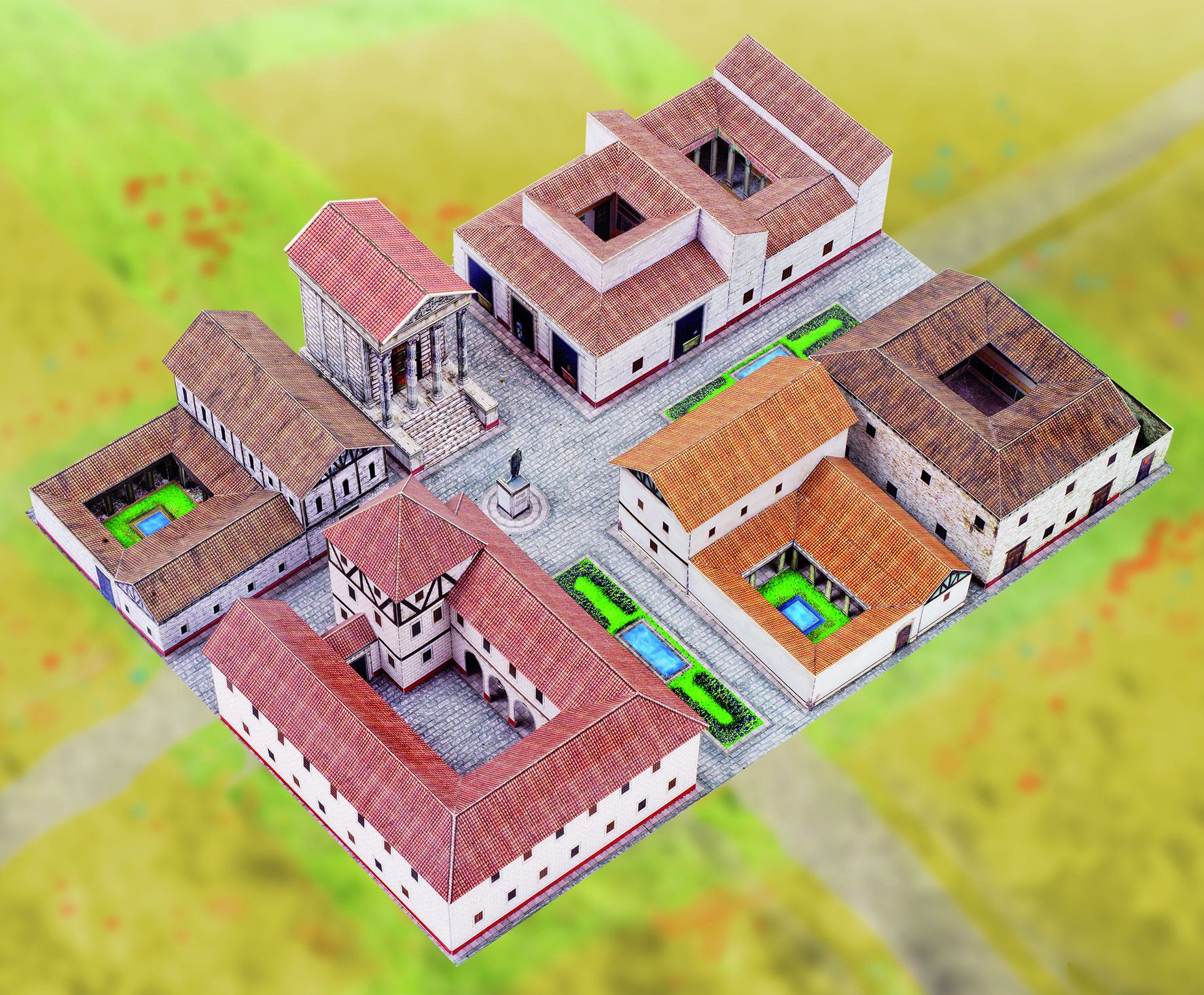Schreiber-Bogen - Roman village
The cardboard model shows several typical Roman buildings; residential buildings, a small temple, and a well.
This model of a Roman village features residential buildings and a small temple. The houses were mostly blocks of flats in which several families lived. Many of these houses were made of wood. In richer villages, houses were built of stone. The houses had glazed windows and toilet facilities. The houses of wealthy Romans also had underfloor heating. There were different types of houses: multi-storey blocks of houses (in Latin: insulae), long houses called strip houses because of their layout, and large villas whose courtyards had water basins and rich decorations.
The people in the Roman villages were mostly self-sufficient. They grew fruit, vegetables and grain in the fields, kept animals and made tools and household utensils in their own workshops. Many of the items they made themselves were also sold. Many houses therefore had small shops and workshops right next to the living area.
There was at least one small temple in every village. Mostly Jupiter, the most important Roman god, was worshipped there. In the villages that sprang up in the lands conquered by the Romans, the god of war Mars was often worshipped as well. The Romans had a great many gods. In larger towns and cities there was a temple for each god.
| Aspiration scale: | Easy |
|---|---|
| Time Line: | 0,5 Hour |
sturdy, coloured paper
42 cm long, 30 cm wide, 7 cm high
Distributor
PGI-Skarabäus, Im Kränzliacker 9, 79576 Weil am Rhein, Germany, www-pgi-shop.de
PGI-Skarabäus, Unterdorfstrasse 23a, 4143 Dornach, Switzerland, www-pgi-shop.ch
Manufacturer: Aue-Verlag GmbH, Postfach 1108, 74215 Möckmühl, Germany, www.schreiber-bogen.de
Adult supervision:
Children under 14 years of age should be instructed by adults on correct use to avoid risks from improper handling.
Risk of injury:
Be particularly careful when handling scissors and craft knives! Use sharp tools carefully and, if necessary, take suitable safety measures to avoid injuries.
Use of adhesive:
When using adhesive, follow the manufacturer's safety instructions. Work in well-ventilated rooms and avoid skin or eye contact.
Be careful with small parts:
Hazard of suffocation! Keep small parts out of the reach of small children.
Fire hazard:
Keep away from open fire and heat sources. Product contains highly flammable materials and can ignite or melt.
Intended use:
The material may only be used for its intended purpose. Independent modifications can impair functionality and safety.

